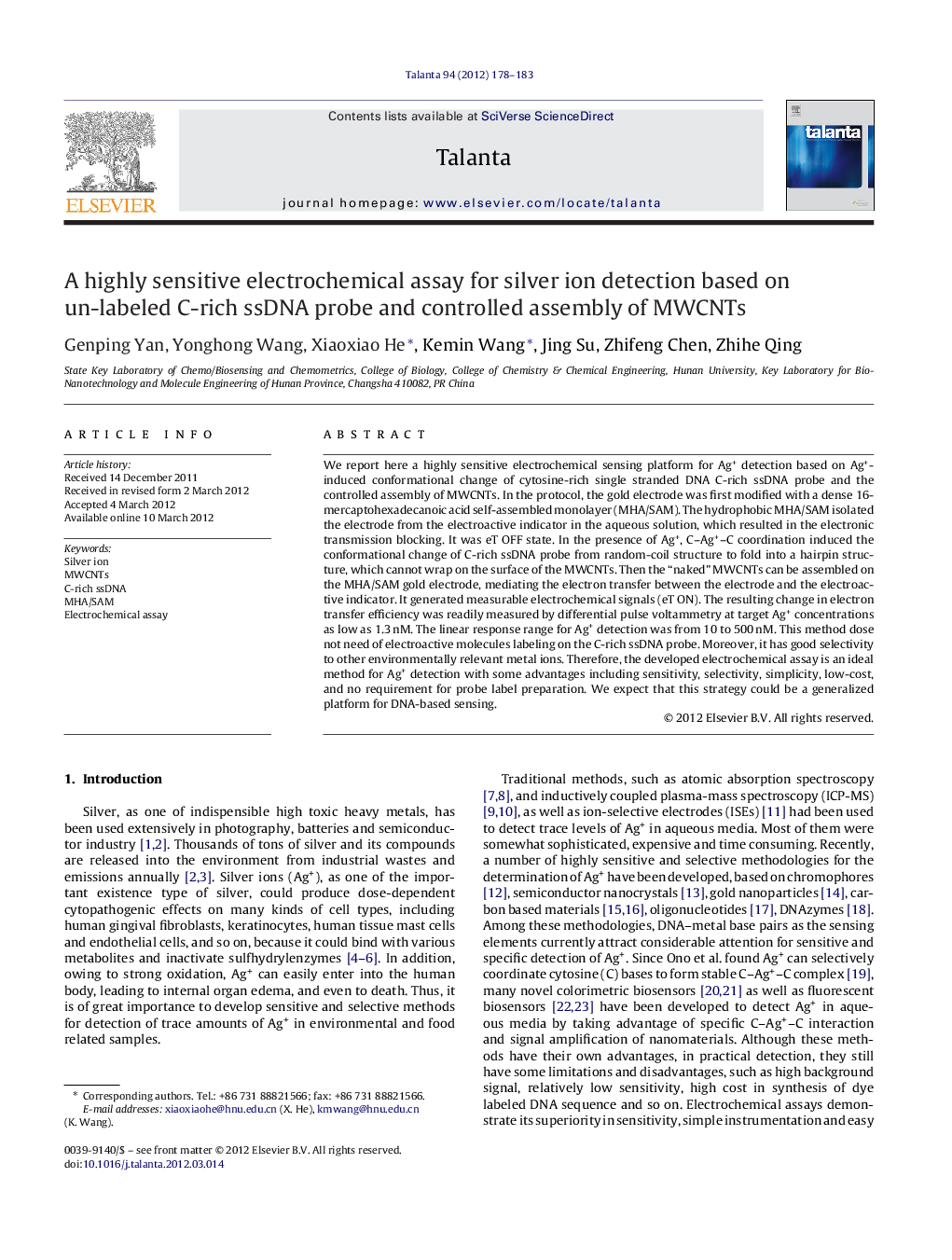| Article ID | Journal | Published Year | Pages | File Type |
|---|---|---|---|---|
| 1245632 | Talanta | 2012 | 6 Pages |
We report here a highly sensitive electrochemical sensing platform for Ag+ detection based on Ag+-induced conformational change of cytosine-rich single stranded DNA C-rich ssDNA probe and the controlled assembly of MWCNTs. In the protocol, the gold electrode was first modified with a dense 16-mercaptohexadecanoic acid self-assembled monolayer (MHA/SAM). The hydrophobic MHA/SAM isolated the electrode from the electroactive indicator in the aqueous solution, which resulted in the electronic transmission blocking. It was eT OFF state. In the presence of Ag+, C–Ag+–C coordination induced the conformational change of C-rich ssDNA probe from random-coil structure to fold into a hairpin structure, which cannot wrap on the surface of the MWCNTs. Then the “naked” MWCNTs can be assembled on the MHA/SAM gold electrode, mediating the electron transfer between the electrode and the electroactive indicator. It generated measurable electrochemical signals (eT ON). The resulting change in electron transfer efficiency was readily measured by differential pulse voltammetry at target Ag+ concentrations as low as 1.3 nM. The linear response range for Ag+ detection was from 10 to 500 nM. This method dose not need of electroactive molecules labeling on the C-rich ssDNA probe. Moreover, it has good selectivity to other environmentally relevant metal ions. Therefore, the developed electrochemical assay is an ideal method for Ag+ detection with some advantages including sensitivity, selectivity, simplicity, low-cost, and no requirement for probe label preparation. We expect that this strategy could be a generalized platform for DNA-based sensing.
► An electrochemical sensing platform for Ag+ detection was developed. ► An un-labeled cytosine-rich ssDNA probe was used for Ag+ recognition. ► Controlled assembly of MWCNTs was used as signal transduction and amplification. ► The developed method is sensitive, selective, simple, and low-cost for Ag+ detection. ► This strategy could be a generalized platform for DNA-based electrochemical sensing.
